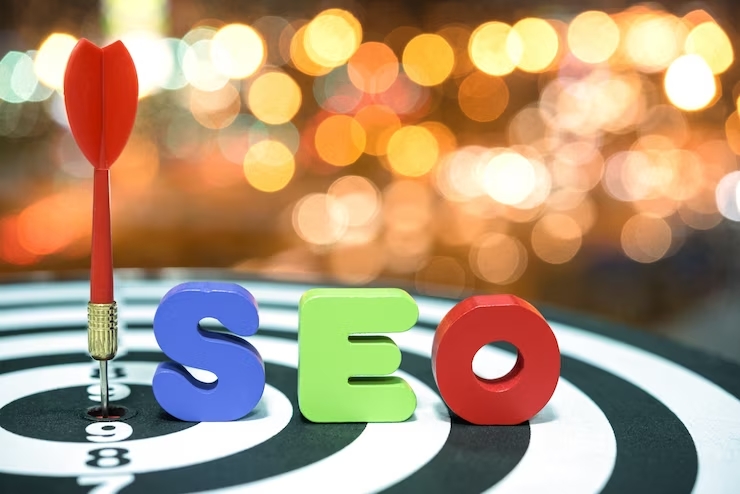An on-page SEO checklist refers to the list of tasks and optimizations you should consider to ensure that a webpage is well-optimized for search engines. It helps in making your content more accessible and interpretable by search engine bots and more valuable for users. Here’s a comprehensive on-page SEO checklist:
- Keyword Research
Keyword research is a foundational SEO (Search Engine Optimization) practice that involves identifying popular words and phrases people enter into search engines. The goal is to figure out what to rank for, and hence, craft content around those keywords to meet users’ needs and attract organic search traffic. Keyword research is important for understanding your audience’s intent and tailoring your content to meet their needs.
- Identify primary and secondary keywords for the page.
- Use tools like Google Keyword Planner, Ahrefs, SEMrush, or Ubersuggest.
Title Tag
A title tag is an HTML element that specifies the title of a web page. Title tags are displayed on search engine results pages (SERPs) as the clickable headline for a given result, and are important for usability, SEO, and social sharing. The title tag is meant to be an accurate and concise description of a page’s content.
- Include the primary keyword.
- Keep it under 60 characters.
Meta Description
The meta description is an HTML attribute that provides a brief summary of the content of a web page. It doesn’t appear on the page itself, but rather in the page’s source code. Search engines, like Google, often display the meta description in search results below the page’s title, serving as a short “ad” or snippet that describes what the page is about.
- Summarize the page content.
- Include the primary keyword.
- Keep it under 160 characters.
URL Structure
URL structure refers to the format and organization of a web address, which represents the specific location of a web page. A well-structured URL is clear, descriptive, and easy for both humans and search engines to understand.
- Keep it short and descriptive.
- Include the primary keyword.
- Use hyphens to separate words.
Header Tags (H1, H2, H3…)
Header tags, in the context of web development and SEO, refer to a range of HTML tags used to designate headings and subheadings on a webpage. These tags play a crucial role in structuring content, making it more readable for users and interpretable for search engines.
- Use only one H1 tag, which includes the primary keyword.
- Use H2, H3, etc., for subheadings and break up content.

Content Quality
Content quality refers to the value, relevance, accuracy, and depth of information provided in a piece of content. High-quality content not only meets the informational needs of its intended audience but is also crafted in a way that’s engaging, easy to understand, and beneficial to the reader.
- Write high-quality, unique, and engaging content.
- Ensure content answers user queries effectively.
Internal Linking
Internal linking refers to the practice of linking one page of a website to another page on the same website. It’s a crucial component in website structure and SEO for several reasons.
- Link to other relevant pages on your website.
- Use descriptive anchor text.
Outbound Linking
Outbound linking, often referred to as external linking, involves placing links on your website that point to web pages on other websites. These links lead users away from your site to other content on the web.
- Link to high-quality, authoritative external sources.
Image Optimization
Image optimization refers to the process of reducing the file size of images without sacrificing their visual quality, ensuring that they are in the most appropriate format, and that they are accessible and display correctly on various devices. This practice is vital for improving website speed and performance, enhancing user experience, and boosting search engine rankings.
- Use descriptive file names.
- Compress images to reduce page load time.
- Use alt tags with a brief description and keywords where appropriate.
Page Load Speed
Page load speed, often simply referred to as “page speed,” is the amount of time it takes for the content on a web page to fully display after a user clicks on a link or types in a URL. It’s a critical metric in web design and SEO for various reasons.
- Optimize site speed by compressing images, using a content delivery network (CDN), and optimizing server performance.
Schema Markup (Structured Data)
Schema markup, often simply called “Schema,” is a semantic vocabulary of tags (or “microdata”) that can be added to the HTML of a webpage to enhance its representation in search engine results pages (SERPs). In essence, it helps search engines understand the context of your content, offering more informative results for users.
Developed through a collaborative effort between Google, Bing, Yahoo!, and Yandex, Schema provides a shared collection of schemas that webmasters can use to mark up their pages in ways recognized by major search providers.
- Use schema markup to help search engines understand the context of your content.
SSL Certificate
An SSL (Secure Sockets Layer) certificate is a digital certificate that authenticates a website’s identity and enables an encrypted connection. SSL has now largely been succeeded by TLS (Transport Layer Security), but the term “SSL” is still commonly used to refer to the security protocol for establishing encrypted links.
- Ensure your site uses HTTPS for security.
Avoid Duplicate Content
- Ensure content on your site is unique and not repeated elsewhere.
Technical SEO Aspects
- Ensure XML sitemap is in place.
- Create a user-friendly 404 error page.
- Set up a robots.txt file.
While this checklist provides a comprehensive guide to on-page SEO, remember that SEO is an evolving field. Best practices can change over time, so it’s essential to stay updated with the latest recommendations and algorithm changes.
